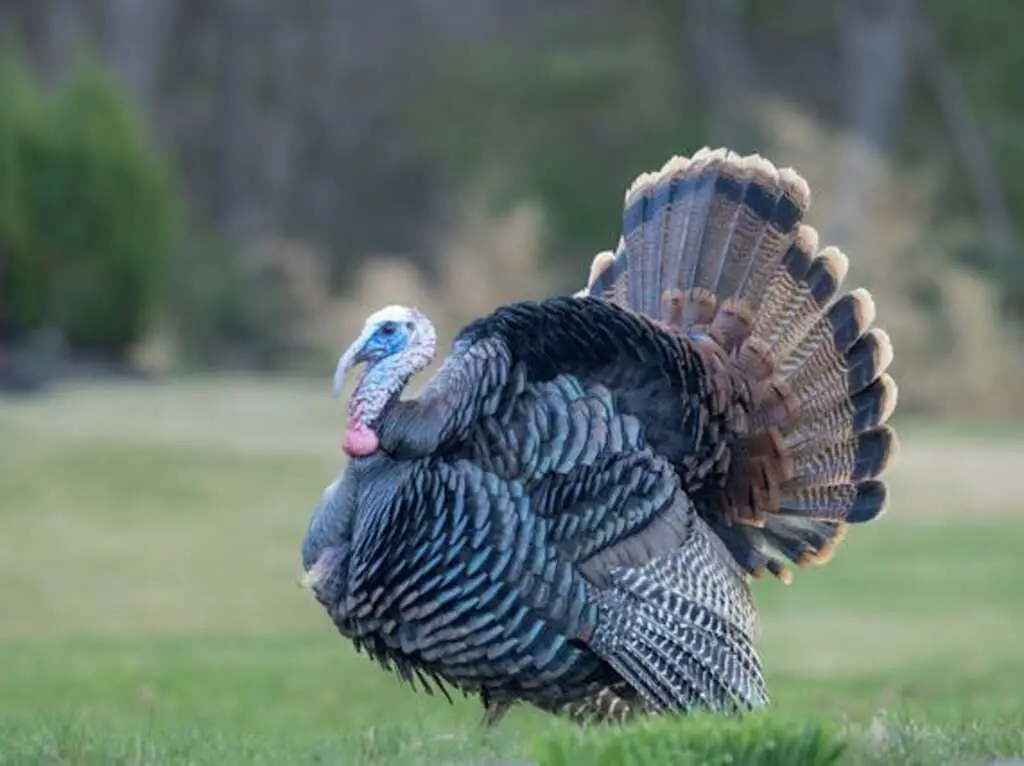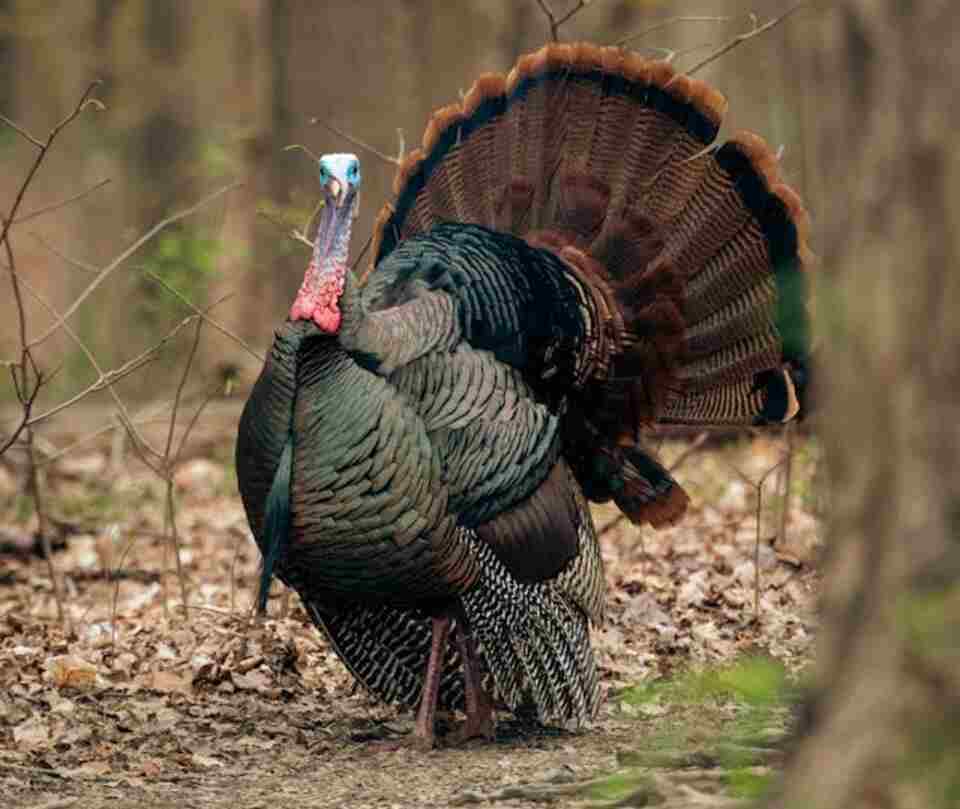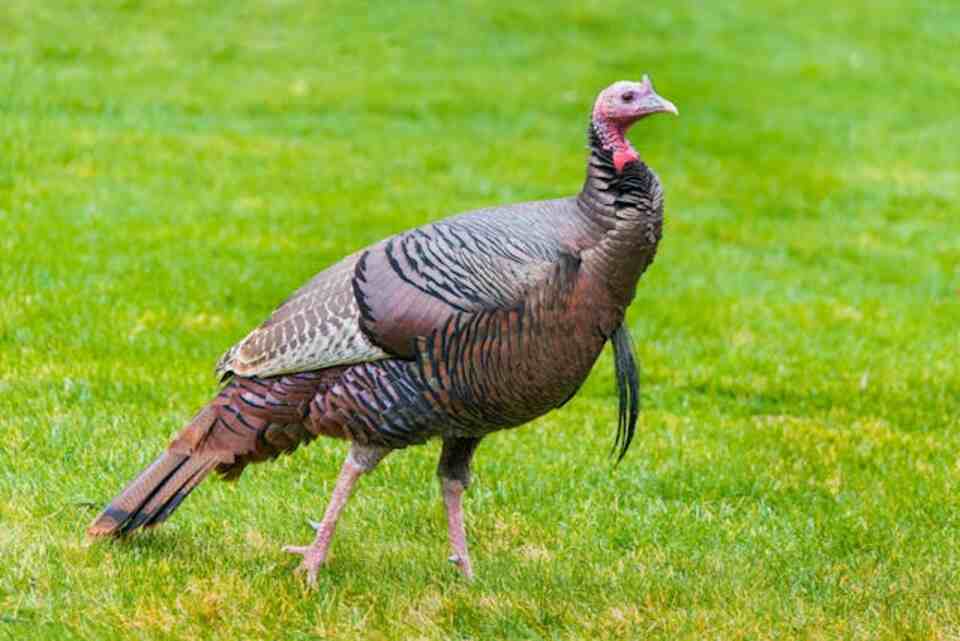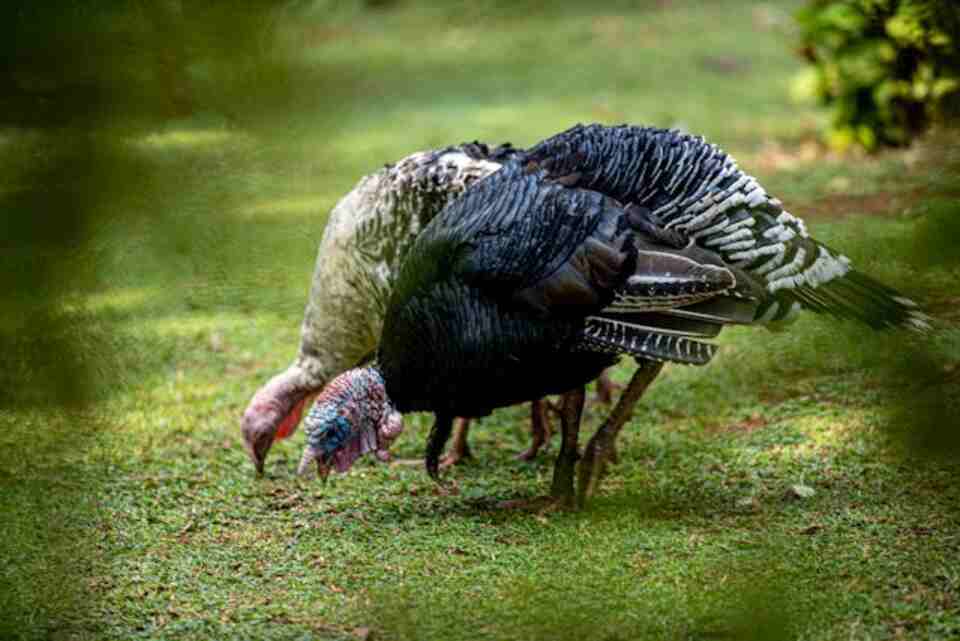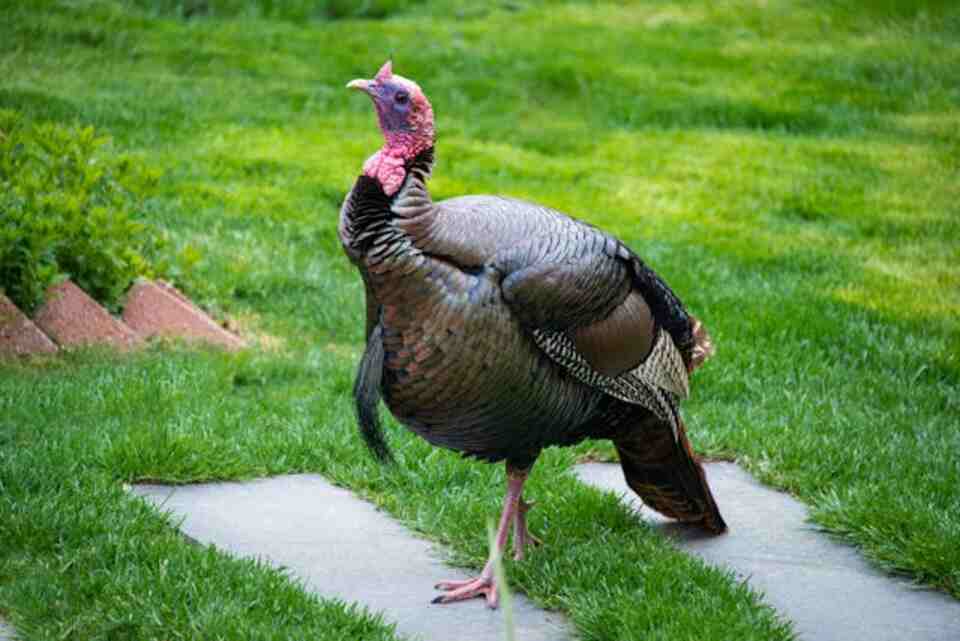Ever wondered, how to attract turkeys to your property? The answer lies in creating a welcoming environment with plenty of food, water, and shelter. Turkeys are drawn to areas with open fields, woodland edges, and food sources like acorns, seeds, and berries. By providing natural habitat and minimizing disturbances, you can increase your chances of attracting these majestic birds. In this article, you’ll learn exactly how to make your property a turkey-friendly haven and encourage them to visit regularly.
Table of Contents
- 1 Turkey Behavior and Habitat Preferences
- 2 Creating an Inviting Turkey Habitat
- 3 Providing Water Sources
- 4 Creating Cover and Roosting Areas
- 5 Managing Open Spaces
- 6 Timber Management
- 7 Prescribed Burning
- 8 Mowing and Haying
- 9 Seasonal Strategies for Attracting Turkeys
- 10 Monitoring and Adapting Your Efforts
- 11 Legal Considerations & Conservation Efforts
- 12 Troubleshooting Common Issues
- 13 Advanced Turkey-Attracting Techniques
- 14 Technology’s Role in Turkey Management
- 15 Long-Term Habitat Improvement Strategies
- 16 Turkey Management and Wildlife Goals
- 17 Economic Aspects of Turkey Management
- 18 Ethical Considerations in Turkey Management
- 19 Community Engagement and Education
- 20 Conclusion
- 21 Author
Turkey Behavior and Habitat Preferences
Before diving into specific attraction methods, it’s crucial to understand what turkeys need and prefer in their environment. This knowledge will help you create an ideal setting that turkeys will naturally gravitate towards.
Natural Turkey Habitats
Turkeys thrive in diverse landscapes that offer a mix of open areas and wooded cover. They prefer:
- Mature hardwood forests with scattered openings
- Young forest stands with dense undergrowth
- Agricultural fields adjacent to wooded areas
- Meadows and grasslands near water sources
The key to attracting turkeys is to provide a variety of these habitat types within close proximity. Turkeys are adaptable birds, but they have specific preferences that vary depending on the time of year and their life stage.
Seasonal Behavior Patterns
Turkeys exhibit different behaviors throughout the year, which can influence their habitat preferences:
- Spring: This is the breeding season, typically lasting from late February to May, depending on the region. Male turkeys (toms) seek out open areas to display and attract females (hens). They fan their tails, puff out their feathers, and produce distinctive gobbling sounds. Hens, on the other hand, look for secluded nesting sites in dense cover, often at the base of trees or in thick brush.
- Summer: As temperatures rise, turkeys seek out shaded areas during the hottest parts of the day. This is also when newly hatched poults (young turkeys) require a protein-rich diet of insects to support their rapid growth. Adult turkeys will often lead their broods to open areas with low vegetation where insects are abundant.
- Fall: As the weather cools, turkeys begin to form larger flocks. They search for abundant food sources to build up fat reserves for the winter. During this time, they may travel considerable distances to find acorns, beechnuts, and other high-energy foods.
- Winter: In colder regions, turkeys congregate in even larger flocks and seek shelter in dense evergreen stands that provide protection from harsh weather. They often stick close to reliable food sources, which can include leftover agricultural crops or areas where mast-producing trees are abundant.
Understanding these seasonal patterns is crucial for creating a year-round attractive environment for turkeys.
Creating an Inviting Turkey Habitat
To attract turkeys, you’ll need to provide the essential elements they require: food, water, cover, and space. Let’s explore each of these components in detail.
Establishing Food Sources
Turkeys are omnivores with a varied diet that changes seasonally. Providing a diverse array of food sources will increase your chances of attracting them year-round.
Natural Food Sources
Encourage the growth of natural turkey foods on your property:
- Mast-producing trees: Oak, beech, hickory, and cherry trees provide acorns and nuts. Different oak species produce acorns at different times, so a variety can extend the food availability. For example, white oaks drop acorns in early fall, while red oaks drop theirs later in the season.
- Berry-producing shrubs: Blackberry, raspberry, and blueberry bushes offer summer and fall food. These not only provide fruit but also attract insects that turkeys feed on. Consider planting native varieties that are well-adapted to your local climate.
- Native grasses: Big bluestem, indiangrass, and switchgrass provide seeds and attract insects. These grasses also offer excellent cover for nesting and brood-rearing. Allow some areas to grow tall and only mow or burn every few years to maintain habitat diversity.
- Forbs and legumes: Clover, alfalfa, and wildflowers offer nutritious greens and seeds. These plants are particularly important in spring and early summer when turkeys are looking for tender, protein-rich vegetation.
To maximize the effectiveness of these natural food sources, consider the following tips:
- Plant in clusters or strips to create easily accessible feeding areas
- Maintain a diverse mix of species to provide food throughout the year
- Allow some areas to grow naturally, promoting native plant species
Supplemental Feeding
While natural food sources are ideal, supplemental feeding can help attract turkeys, especially during harsh winters or when natural food is scarce:
- Cracked corn: Spread in open areas or along field edges. This high-energy food is particularly attractive to turkeys in fall and winter.
- Small grains: Wheat, millet, and oats scattered on the ground. These can be broadcast in food plots or along trails.
- Commercial turkey feed: Available at farm supply stores, use sparingly to avoid dependency. This can be particularly helpful during severe weather events.
When implementing a supplemental feeding program, consider these best practices:
- Gradually introduce supplemental feed to allow turkeys to discover it naturally
- Vary the location of feed to prevent predators from patterning turkey behavior
- Clean feeding areas regularly to prevent the spread of disease
Note: Always check local regulations regarding supplemental feeding of wildlife, as it may be restricted in some areas due to concerns about disease transmission or impacts on natural behavior.
Providing Water Sources
Turkeys require a reliable water source, especially during hot summer months. Water is not just for drinking; it also helps turkeys regulate their body temperature and aids in digestion. Consider the following options:
- Natural water features: Maintain existing streams, ponds, or wetlands on your property. If you have these natural water sources, ensure they remain accessible by managing vegetation around the edges.
- Artificial water sources: Install small ponds, water gardens, or birdbaths. These can be particularly effective in drier areas or during drought conditions. When creating artificial water sources, consider the following:
- Ensure a gradual slope for easy access
- Maintain a depth of 2-3 inches at the edges for safe drinking
- Place near cover to provide security while turkeys drink
- Drip systems: Set up a slow-dripping water source in dry areas. This can be as simple as a bucket with a small hole or a more sophisticated wildlife dripper system.
- Seeps and springs: If your property has natural seeps or springs, maintain them by clearing vegetation and ensuring a steady flow.
Ensure that water sources are easily accessible and located near cover for safety. Turkeys are wary creatures and prefer to have escape routes nearby when visiting water sources.
Creating Cover and Roosting Areas
Turkeys need various types of cover for protection, nesting, and roosting. Diversify your property’s cover options to meet all these needs:
- Mature trees: Preserve large, sturdy trees for roosting sites. Turkeys prefer to roost in trees with horizontal branches and open canopies. Oaks, pines, and other large hardwoods are ideal.
- Brush piles: Create dense cover by stacking fallen branches and logs. These provide excellent protection from predators and harsh weather. Aim for brush piles that are at least 5 feet high and 10-15 feet in diameter.
- Native shrubs: Plant thickets of native shrubs for nesting and escape cover. Species like dogwood, viburnum, and hazelnut not only provide cover but also offer food sources.
- Tall grass areas: Allow some areas to grow unmowed for nesting habitat. Native warm-season grasses like big bluestem and indiangrass are excellent choices.
- Edge habitat: Create gradual transitions between different habitat types. These edge areas are particularly attractive to turkeys as they offer both food and cover in close proximity.
When managing cover, consider the following tips:
- Maintain a mosaic of different cover types across your property
- Create corridors of cover that connect different habitat areas
- Regularly assess and maintain cover areas to ensure they remain effective
Managing Open Spaces
While cover is essential, turkeys also require open areas for feeding, displaying, and dusting. Maintain a balance of open and wooded areas:
- Forest clearings: Create small openings (1-5 acres) within wooded areas. These can be maintained through selective cutting or prescribed burning.
- Field edges: Maintain gradual transitions between fields and forests. This can be achieved by allowing some areas to grow up with shrubs and small trees.
- Food plots: Establish small agricultural plots specifically for wildlife. These can range from 1/4 acre to several acres depending on your property size.
- Dusting areas: Create or maintain sandy or dusty areas where turkeys can take dust baths to control parasites. These can be as simple as exposed soil in sunny locations.
When managing open spaces, consider the following:
- Maintain a variety of opening sizes to accommodate different turkey behaviors
- Rotate crop types in food plots to maintain soil health and provide diverse food sources
- Use prescribed fire where appropriate to maintain open areas and promote native vegetation
Implementing Turkey-Friendly Land Management Practices
Proper land management is key to maintaining a turkey-friendly environment. Consider the following practices:
Timber Management
Effective timber management can greatly enhance turkey habitat:
- Conduct selective thinning to promote understory growth. This allows more light to reach the forest floor, encouraging the growth of food-producing plants.
- Leave some fallen trees and logs for insect habitat. These decaying logs are excellent sources of the insects that poults need for protein.
- Maintain a mix of tree ages and species for diverse food sources. A forest with trees of various ages provides different types of mast (nuts and fruits) throughout the year.
- Create small clearings within forested areas to provide display grounds for male turkeys during breeding season.
- Preserve den trees and snags (dead standing trees) which can serve as roosting sites and attract insects for turkeys to feed on.
Prescribed Burning
Controlled burns can be an effective tool for managing turkey habitat:
- Use controlled burns to rejuvenate native grasses and forbs. Fire removes old, dead vegetation and stimulates new growth that is more nutritious for wildlife.
- Burn in a mosaic pattern to maintain habitat diversity. This creates a patchwork of burned and unburned areas, providing both food and cover.
- Follow local regulations and obtain necessary permits. Work with local forestry or wildlife agencies to develop a safe and effective burning plan.
- Time burns to avoid nesting season, typically conducting them in late winter or early spring before turkeys begin nesting.
Mowing and Haying
Proper mowing practices can help maintain turkey habitat:
- Delay mowing until after nesting season (typically July) to protect nesting hens and poults.
- Leave unmowed strips and patches for cover. These can be rotated annually to maintain habitat quality.
- Implement rotational mowing to maintain habitat diversity. This ensures that there are always some areas of tall grass available for cover.
- When mowing is necessary, use a flushing bar on your equipment to help prevent injury to wildlife.
Minimizing Disturbances and Threats
To keep turkeys coming back to your property, it’s important to create a safe environment:
- Predator control: Manage predator populations through legal and ethical means. This may include trapping programs or habitat modifications that discourage predators.
- Domestic animals: Keep pets confined or supervised to prevent harassment of turkeys. Free-roaming dogs can be particularly disruptive to turkey populations.
- Human activity: Limit disturbances in key turkey areas, especially during breeding season. Consider designating some areas of your property as low-traffic zones.
- Hunting pressure: If hunting is allowed on your property, manage it carefully to prevent overharvest and excessive disturbance.
- Pesticide use: Minimize the use of pesticides, especially insecticides, as these can reduce the insect populations that turkeys rely on for food.
Seasonal Strategies for Attracting Turkeys
Tailor your attraction methods to the changing needs of turkeys throughout the year:
Spring
- Maintain open areas for strutting and breeding displays. These should be near cover but offer good visibility.
- Provide nesting cover near field edges and in brushy areas. Hens prefer areas with a mix of grasses and forbs for concealment.
- Offer calcium-rich grit to support egg production. This can be provided in small amounts near feeding areas.
- Manage for early-growing plant species that provide nutritious spring forage.
Summer
- Encourage insect populations by avoiding pesticide use and maintaining diverse vegetation.
- Maintain diverse vegetation for poult foraging. Areas with a mix of grasses, forbs, and scattered shrubs are ideal.
- Ensure easy access to water sources, as turkeys will need to drink more frequently in hot weather.
- Provide areas of bare ground for dust bathing, which helps turkeys control parasites.
Fall
- Allow crops to stand in agricultural fields if possible. Standing corn or soybeans can be excellent food sources.
- Preserve fall mast crops like acorns and beechnuts. Consider fencing off some areas to prevent deer from consuming all the mast.
- Maintain brushy areas for cover during hunting season. This provides security for turkeys during a time of increased pressure.
- Create wildlife openings planted with fall-maturing crops like brassicas or winter wheat.
Winter
- Leave standing corn or grain crops unharvested to provide high-energy food during cold months.
- Create brush piles for winter cover. These offer protection from harsh weather and predators.
- Consider supplemental feeding if natural food is scarce, but be aware of local regulations.
- Maintain evergreen stands for roosting cover. Conifers provide excellent protection from wind and cold.
Monitoring and Adapting Your Efforts
Attracting turkeys is an ongoing process that requires observation and adaptation:
- Keep a journal: Record turkey sightings, behaviors, and habitat use. Note patterns in their movements and preferences.
- Use trail cameras: Monitor turkey activity without disturbing them. Place cameras near food sources, water, or known travel corridors.
- Conduct regular surveys: Walk your property at different times of day and seasons to observe turkey sign and activity.
- Adjust strategies: Based on your observations, refine your habitat management techniques. Be prepared to modify your approach if certain methods aren’t producing results.
- Seek expert advice: Consult with local wildlife biologists or experienced turkey managers for region-specific recommendations.
Legal Considerations & Conservation Efforts
Before implementing any turkey attraction methods, be sure to:
- Check local laws: Ensure your activities comply with wildlife regulations. Some states have specific rules about feeding wildlife or altering habitats.
- Obtain permits: If required for habitat modifications or feeding programs. This is particularly important for activities like prescribed burning or wetland creation.
- Support conservation: Consider partnering with local wildlife organizations or participating in citizen science projects related to turkey conservation.
- Educate others: Share your knowledge and experiences with neighbors and other landowners to promote turkey conservation on a larger scale.
Troubleshooting Common Issues
If you’re having trouble attracting turkeys, consider these potential problems and solutions:
| Issue | Possible Cause | Solution |
|---|---|---|
| No turkey sightings | Lack of essential habitat elements | Assess and improve food, water, and cover availability |
| Turkeys visit but don’t stay | Insufficient resources or disturbances | Enhance habitat quality and minimize human activity |
| Seasonal absence | Natural migration patterns | Focus on creating year-round attractive features |
| Predator pressure | High population of natural predators | Implement ethical predator management techniques |
| Sudden disappearance | Hunting pressure or habitat disturbance | Review local hunting practices and minimize habitat alterations |
| Overabundance of turkeys | Highly successful habitat management | Consider implementing a management plan to maintain a healthy population |
Advanced Turkey-Attracting Techniques
For those looking to go the extra mile in attracting turkeys, consider these advanced strategies:
Habitat Connectivity
Create wildlife corridors that connect your property to nearby turkey habitats:
- Plant tree and shrub lines along fencerows to provide travel lanes and cover
- Establish native vegetation buffers along waterways to create natural corridors
- Collaborate with neighbors to create larger, connected habitats that benefit turkeys and other wildlife
Specialized Food Plots
Develop food plots specifically designed for turkeys:
- Chufa plots: Plant chufa tubers, a favorite turkey food. These plots can be particularly attractive in late fall and winter.
- Corn and soybean rotation: Alternating crops provide year-round food sources and improve soil health.
- Native warm-season grass mixtures: Offer both food and cover. These can be planted in strips or small fields.
- Diverse cool-season plots: Plant a mix of wheat, oats, and clover for nutritious spring and fall forage.
Acoustic Attraction
Use turkey calls strategically to attract birds to your property:
- Learn and practice various turkey vocalizations, including yelps, clucks, and purrs
- Use calls sparingly to avoid over-pressuring the birds or making them overly wary
- Consider electronic callers where legal (check local regulations), but use them judiciously
Micro-Habitat Management
Focus on creating small, highly attractive areas within your larger property:
- Develop “strut zones for spring breeding displays
- Create small, secluded “bugging areas” for poults with a mix of forbs and grasses
- Establish “satellite” food plots in remote areas of your property to encourage exploration
Advanced Water Management
Enhance your property’s water features to make them more attractive to turkeys:
- Install small, solar-powered pumps to create moving water in ponds or streams
- Create shallow water “seeps” on hillsides to mimic natural springs
- Develop a network of small, interconnected water sources across your property
Technology’s Role in Turkey Management
Modern technology can play a significant role in attracting and managing turkeys on your property:
Mapping and GIS Tools
Utilize Geographic Information System (GIS) tools to map and analyze your property:
- Create detailed habitat maps to identify areas for improvement
- Track turkey movements and habitat use over time
- Plan and document management activities
Remote Sensing
Use satellite imagery and drone technology to assess your property:
- Monitor vegetation changes and health
- Identify potential roost sites and travel corridors
- Assess the impact of management practices on habitat quality
Weather Stations
Install a weather station on your property to:
- Track local weather patterns that may affect turkey behavior
- Time management activities (like prescribed burns) for optimal conditions
- Correlate turkey activity with specific weather events
Long-Term Habitat Improvement Strategies
Attracting turkeys is not just about short-term solutions. Consider these long-term strategies for creating a sustainable turkey habitat:
Forest Succession Management
Actively manage forest succession to maintain diverse habitats:
- Implement a rotational cutting schedule to maintain areas of young forest
- Use selective harvesting to promote mast-producing tree species
- Create and maintain forest openings of various sizes
Invasive Species Control
Prevent and manage invasive plant species that can degrade turkey habitat:
- Regularly survey your property for invasive plants
- Implement mechanical, chemical, or biological control methods as appropriate
- Replace invasive species with native plants that benefit turkeys
Soil Health Management
Improve and maintain soil health to support robust plant growth:
- Implement cover cropping in agricultural areas
- Use no-till or minimal tillage practices where possible
- Regularly test soil and amend as necessary to support desired plant species
Turkey Management and Wildlife Goals
While focusing on turkeys, consider how your management practices can benefit other wildlife species:
Deer Management Synergies
Many practices that benefit turkeys also support healthy deer populations:
- Maintain a mix of forest and open habitats
- Create food plots that serve both species
- Manage for mast-producing trees like oaks and hickories
Songbird Habitat Enhancement
Incorporate features that attract a variety of songbirds:
- Plant native fruit-bearing shrubs
- Maintain diverse forest understory vegetation
- Create brush piles and snags for nesting and foraging
Pollinator Support
Integrate pollinator-friendly practices that also benefit turkeys:
- Plant native wildflowers in open areas and field borders
- Reduce or eliminate pesticide use
- Maintain areas of bare ground for ground-nesting bees
Economic Aspects of Turkey Management
While attracting turkeys can be rewarding, it’s important to consider the economic aspects:
Cost-Benefit Analysis
Evaluate the costs and benefits of various management practices:
- Compare the expenses of different food plot strategies
- Assess the long-term value of timber management practices
- Consider potential income from hunting leases or eco-tourism
Funding Opportunities
Explore programs that can help offset the costs of habitat improvement:
- Research federal conservation programs like the Conservation Reserve Program (CRP)
- Investigate state-level wildlife habitat improvement grants
- Consider partnering with conservation organizations for cost-sharing opportunities
Sustainable Land Use
Balance turkey habitat management with other land use goals:
- Integrate turkey-friendly practices into agricultural operations
- Explore agroforestry techniques that benefit both timber production and wildlife
- Consider developing hunting or wildlife viewing opportunities as additional income streams
Ethical Considerations in Turkey Management
As you work to attract turkeys to your property, it’s crucial to consider the ethical implications of your actions:
Population Management
Ensure that your efforts to attract turkeys don’t lead to overpopulation:
- Monitor turkey numbers and health on your property
- Work with local wildlife officials to determine appropriate population levels
- Be prepared to implement population control measures if necessary
Balancing Predator and Prey
While managing predators can benefit turkeys, it’s important to maintain ecological balance:
- Focus on habitat management techniques that naturally reduce predation risk
- Use non-lethal predator deterrents when possible
- If lethal control is necessary, ensure it’s done ethically and in compliance with all regulations
Responsible Hunting Practices
If hunting is part of your turkey management plan:
- Implement and enforce ethical hunting guidelines on your property
- Educate hunters about sustainable harvest rates
- Consider implementing a quality turkey management program to promote mature bird populations
Community Engagement and Education
Engaging with your local community can enhance your turkey management efforts:
Neighbor Cooperation
Work with neighboring landowners to create larger, connected habitats:
- Share your turkey management goals and successes
- Coordinate habitat improvement efforts across property lines
- Consider forming a local wildlife management cooperative
Educational Outreach
Share your knowledge and experiences with others:
- Host workshops or field days on your property to demonstrate turkey management techniques
- Collaborate with local schools or youth organizations for educational programs
- Develop informational materials about turkey conservation for distribution in your community
Citizen Science Participation
Contribute to broader turkey conservation efforts:
- Participate in state or national turkey population surveys
- Report turkey sightings and behaviors to relevant scientific databases
- Engage in banding or other research programs if available in your area
Conclusion
Attracting turkeys to your property is more than just a hobby or management practice—it’s an opportunity to contribute to the conservation of these magnificent birds and the habitats they depend on. By implementing the strategies outlined in this comprehensive guide, you’re not only creating an inviting environment for turkeys but also fostering a rich, diverse ecosystem that benefits a wide range of wildlife.
Remember that success in attracting and maintaining a healthy turkey population is a long-term endeavor that requires patience, persistence, and adaptability. As you observe the turkeys on your property and learn from your experiences, you’ll be able to fine-tune your management practices to better meet their needs throughout the seasons and years.
Moreover, your efforts extend beyond your property lines. By sharing your knowledge, collaborating with neighbors, and engaging with your community, you’re contributing to a broader conservation ethic that can have lasting impacts on turkey populations and their habitats.
As you embark on or continue your journey in turkey habitat management, take pride in knowing that your efforts are making a tangible difference. Each food plot you plant, each acre of habitat you improve, and each ethical decision you make in your management practices contributes to the bigger picture of wildlife conservation.
May your property become a haven for turkeys, a model of sustainable wildlife management, and a source of joy and learning for generations to come. Happy turkey watching, and here’s to the wild turkey—a true symbol of American wildlife conservation success!

